In today’s world, issues related to mental health and addiction are alarmingly common. Individuals suffering from these dual afflictions often find themselves in a vicious cycle where untreated mental health disorders exacerbate substance abuse and vice versa. For lasting recovery, it’s essential to address both conditions simultaneously—a concept known as dual diagnosis treatment. This comprehensive approach offers a path to healing for those seeking to reclaim their lives from the grips of addiction and mental health disorders.
Understanding Dual Diagnosis
Dual diagnosis, also known as co-occurring disorders, refers to the condition of having both a mental health disorder and a substance use disorder. These intertwined problems often feed off each other, making recovery particularly challenging. Common mental health disorders associated with dual diagnosis include anxiety, depression, bipolar disorder, post-traumatic stress disorder (PTSD), and schizophrenia.
The Interconnectedness of Mental Health and Addiction:
- Self-Medication: Many individuals with mental health disorders turn to substances like alcohol or drugs as a form of self-medication. While these substances may temporarily alleviate symptoms, they often worsen the underlying condition in the long term.
- Chemical Imbalances: Substance abuse can alter brain chemistry, making individuals more susceptible to mental health disorders. Conversely, existing mental health conditions can make the brain more receptive to the addictive properties of substances.
- Compounded Stress: The stress of dealing with a mental health disorder can drive individuals to seek solace in substances. Over time, this cycle of stress and self-medication leads to deeper addiction and more severe mental health symptoms.
The Importance of Dual Diagnosis Treatment
Treating only one component of dual diagnosis often leads to relapse. For instance, someone might receive treatment for substance abuse, only to find their untreated mental health disorder driving them back to drug use. Dual diagnosis treatment aims to break this cycle by addressing both conditions simultaneously.
Comprehensive Assessment and Customized Plans:
- Integrated Treatment: At the core of dual diagnosis treatment is an integrated approach that simultaneously addresses both mental health and substance use disorders. This approach ensures that neither condition is neglected and that the underlying factors contributing to each are managed holistically.
- Individualized Care: Each individual’s experience with mental health and substance abuse is unique. As such, effective treatment plans are tailored to address the specific needs, preferences, and circumstances of each patient.
Therapeutic Approaches:
- Cognitive Behavioral Therapy (CBT): CBT is a cornerstone of dual diagnosis treatment. It helps patients identify and alter negative thought patterns and behaviors that contribute to both their mental health disorder and addiction.
- Dialectical Behavior Therapy (DBT): DBT is particularly effective for patients with co-occurring disorders. It combines CBT with mindfulness practices, helping individuals manage stress, regulate emotions, and develop healthier coping mechanisms.
Medication Management:
- Psychopharmacology: In some cases, psychotropic medications are used to stabilize mood, reduce symptoms of mental health disorders, and lessen cravings for substances. Careful monitoring ensures that these medications are effective and not contributing to further abuse.
Support Systems:
- Peer Support Groups: Participating in peer support groups, such as 12-step programs or other recovery communities, fosters a sense of connection and accountability, which is crucial for long-term recovery.
- Family Involvement: Involving family members in the treatment process can provide a strong support network, helping to sustain recovery efforts and rebuild trust and communication.
Steps to Break the Cycle
The first step towards recovery is acknowledging the problem and seeking professional help. Self-medication or self-diagnosis can be detrimental and may lead to worsened conditions. A comprehensive evaluation by a healthcare provider specializing in dual diagnosis is critical.
Commitment to Treatment:
Recovery is a journey that requires commitment. Detoxification, therapy sessions, and regular monitoring are components of a well-rounded treatment plan. Overcoming co-occurring disorders is challenging, but with perseverance and professional support, it is achievable.
Building a Support Network:
Surrounding oneself with supportive individuals—whether friends, family, or peer groups—plays a crucial role in recovery. These networks provide encouragement and accountability, helping individuals stay on track during difficult times.
Developing Healthy Habits:
Adopting a lifestyle that promotes mental and physical well-being is essential. Regular exercise, a balanced diet, adequate sleep, and mindfulness practices can significantly enhance treatment outcomes.
Your Path to Recovery Starts Here
At Resilience Behavioral Health, we understand the complexities of dual diagnosis and are committed to providing comprehensive, personalized care for individuals struggling with both mental health disorders and addiction. Our dual diagnosis treatment center in Massachusetts offers a range of evidence-based therapies, medication management, and supportive services designed to help you break free from the cycle of co-occurring disorders.
Don’t wait for the first step towards a healthier, more fulfilling life. Contact Resilience Behavioral Health’s dual diagnosis treatment center in MA today and let our compassionate, experienced team guide you on your journey to recovery.
Your path to renewed health and well-being begins with one call. Reach out to Resilience Behavioral Health now and start your journey towards breaking the cycle.


